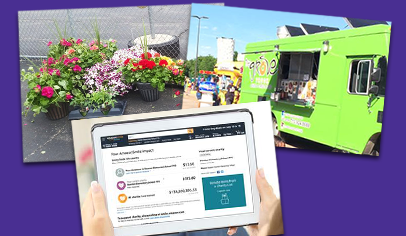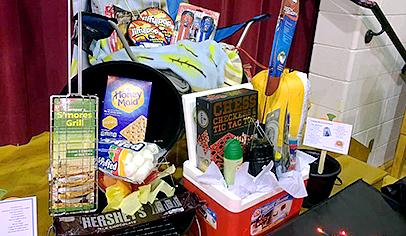Thinking of holding a live auction fundraiser? A live auction can add a lot of excitement to your event without the headaches of running a big silent auction. And, as I’ve learned from my years as an auction chair and PTA president, it can be just as productive financially.
Why Go Live?
You can pull a live auction together with relatively few items, and with a lot less planning and volunteer resources required than with large silent auctions. It’s a high-energy addition to larger events, like a silent auction, casino night or fundraising dinner, arts celebration, or student performance. Because you’re focusing on relatively few items, you don’t have to put in as much time and effort. A small number of items with high intangible value—for example, special classroom mementos or special experiences—can raise more money than a traditional silent auction that has lots of lesser-value items.
Points To Consider First
Live auctions work best with experiential items that will most likely take effort to get—a stay in a mountain cabin or backstage passes to a concert, for example. They don’t work as well with items that have fixed values, like salon certificates or restaurant gift cards—those types of items work better in silent auctions or raffles. And you must be patient. If you’re just getting started, it might be difficult to round up the highest-value items your first year. But keep in mind you’re building momentum for future years.
Should You Try a Live-Auction-Only Event?
It’s risky. The most successful fundraisers typically have several different ways to raise money. This reduces the impact of any one revenue stream failing, and it creates multiple ways for potential supporters of your group to contribute. At most schools, relatively few people will come to a fundraiser prepared to spend several hundred dollars or more—the amount you might seek for a single live auction item. So, going live-only most likely excludes many supporters who would otherwise attend (and spend money at) a more traditional fundraiser.
Excuses To Avoid
“My school is poor.” “Nobody will donate items.” “Nobody will bid.” Shut down this noise. Your donors and winning bidders can be anybody, from parents to grandparents, friends, community members, school administrators, teachers, and staff members.
Explain Where the Money Will Go
Before the event, talk with administrators, teachers, and staff about how the money will be spend—then set a fundraising goal and tell the story to everybody. Stay out of the trap of fundraising with no plan. It’s much easier for givers to get on board if they know why you’re raising money.
Getting Your Live Auction Items Together
Remember, you want high-value items for your live auction. Start with what your school can give. This can include students’ classroom art projects (get the art teacher on your side immediately), preferred parking in the school’s carpool lane, a parking spot in the school lot, the chance for a student to be principal for a day, and more.
Be creative with what you have. At the annual silent and live auction at my daughter’s middle-income public elementary school (with just 375 students), a group of foodie moms get together annually and donate a school year’s worth of monthly lunches for a teacher; the winning bidder at the live auction chooses the teacher. Firefighter dads at our school get permission from the city to auction off rides to school in a fire truck. And my daughter’s kindergarten teacher donated a hardbound yearbook of photos she took of her students during the school year and published using a web template; this item was so hot in the live auction, she donated a second one.
As you build momentum, it’s important to get to know who’s at your school. Know what your parents do for a living. Mine your families and friends for things they can give or have access to. Don’t forget alumni and their parents. Be a friendly arm-twister. At my daughter’s school, this annual search has led to a consistently robust offering of live auction items, including:
-
Premium tickets behind home plate at major league baseball games (friend of a parent)
-
Weekend stays at a vacation cabin (school family)
-
Flight in a vintage aircraft (friend of a parent)
-
Custom-built playhouses (remodeler dad)
-
“Celebrity” appearances by the police chief; he reads books to a classroom, answers questions, and poses for pictures (we asked, he said yes, and the kids love it)
-
Purebred puppies (community donors)
-
Multicourse dinner prepared on-site by a chef who used to cook for Queen Elizabeth (school dad)
What do these items have in common? They have high intangible value. In some cases, we became aware of what these donors had to offer, and we approached them. In other cases, the auction’s success over a number of years drew more donors.
Auction Software and Paid Services
If you’re still at the manual inventory management level, the good news is that a live auction that’s limited in scope isn’t likely to add much pressure. Assuming that multiple people on your committee are responsible for inputting inventory and using that information, you can use a shared system like Google Docs. Put one detail-oriented person in charge of ensuring consistency in headlines, descriptions, minimum bids, and other key information that you’ll use in everything from catalogs to bid sheets and collateral materials.
How do you know if your event has grown to where you’re ready to pay for a software package or service? One easy measure to start with is your expense ratio—the total expenses as a percentage of projected revenue. You’ll want to keep this low, say, 8 to 10 percent of sales. If you can buy a software product or hire a service and your expense ratio is still in this range, that’s a good sign that your event is complex enough (and profitable enough) to move to the next level of service.
The event at my daughter’s school eventually had hundreds of items to sell, and our volunteers labored for months to prepare for it, then slogged their way through the event. We did this manually for a few years until we realized that we were leaving thousands of dollars on the table annually—one year, we forgot to impose minimum bids in our silent auction; four seats in a suite at a Major League Soccer game for $67.50, anyone? That’s when we bought a software package. It moved us from Excel to a platform that allowed us to easily manage every aspect of our event. The software purchase paid off; our sales doubled within a few years to more than $80,000.
On the front end, the software allows quick input of auction items along with their descriptions, minimum bids, and category classification like “live auction.” We could also track donor information and sponsorships. Built-in templates generated bid sheets and catalogs using the inventory information we input. Closer to the event, we used the software to manage ticket sales, assign bidder numbers, and manage other guest information. At the event, we used it to check in guests, take their credit card information up front so we could charge them for any winning bids, and, finally, print invoices and check out guests. No more manual invoice tabulation. You can sell tickets online and allow mobile bidding with these platforms. There are several national competitors offering packages at different price points, so you’ll want to research which one works best for your group.
The next step up is a full-service provider that runs your event. You can choose full staffing by your service provider, or some combination of paid staff and volunteers to reduce expenses. Paid staff means you have more people bidding instead of being stuck in your back office—which means more fun for all, and more money raised. Package benefits range from a fully staffed event with tablets and mobile apps to integrated online auctions to simply having an event manager and online support. These systems also allow bidders to set a maximum bid per item and automate their bidding process, and some have self-checkout options and gadgets like countdown clocks.
You’ll pay thousands of dollars for full-service packages. Our school now pays $5,000 annually for one of these services, but it’s money well-spent: Sales rose $30,000 the first year we did so, to $127,000.
Live Auction Volunteer Needs
-
An auctioneer
-
“Ring men” and “ring women” who work with the auctioneer to draw bids and keep track of who has already bid and who looks interested
-
People who work with the ring men and women to record winning bids
-
People who input winning bid information into your system so your winners can be charged
If you don’t have a paid service, how many volunteers you’ll need depends in part on factors like how many bidders and items you’ll have, but you can reasonably assume you’ll need a dozen volunteers plus your auctioneer.
Ideally, your ring men and women should know a lot of people in your school and be fun, friendly, and fearless cajolers.
Your auctioneer can be a volunteer parent, a local celebrity, or someone you hire; our school, through a connection, had a dynamic TV personality lead our auction for several years as a volunteer. When is it worth it to hire an auctioneer? As your event—and the stakes—move to the next level, you’ll want to ensure you’re running the most consistent, fast-moving, and professionally presented fundraiser possible, and the benefit of hiring an auctioneer goes up. An auctioneer in your area might be interested in donating services or giving you a price break—it never hurts to ask.
Event Setup
At the simplest level, you can use Microsoft Word to put together attractive tabletop placards mounted on foam core that highlight each live auction item. For easy record-keeping, print each item’s inventory number on the placard so winning bids can be easily connected to the right items.
Assuming you’re holding an event of some size, you’ll need a microphone and a wired or wireless connection to your location’s audiovisual system or to an external sound system. You can take your live auction a step further and project images of items that are being bid onto a screen or wall via PowerPoint. You’ll need a laptop and connection to the AV system for this.
Running Your Live Auction Fundraiser
The live auction should be the last item on your event agenda, or close to it. Shut down everything else and make sure all potential bidders are in the room and paying attention. Don’t spend a lot of time figuring out your minimum bids; if you have strong items in the auction and have talked them up, they’ll get bids. For each item, choose an accessible opening bid that you know someone in your audience will make. The sparks should fly.
Scott Nishimura is a Texas journalist and parent volunteer. He chaired—and survived—the silent and live auctions at his daughter’s public elementary school for six years.

























